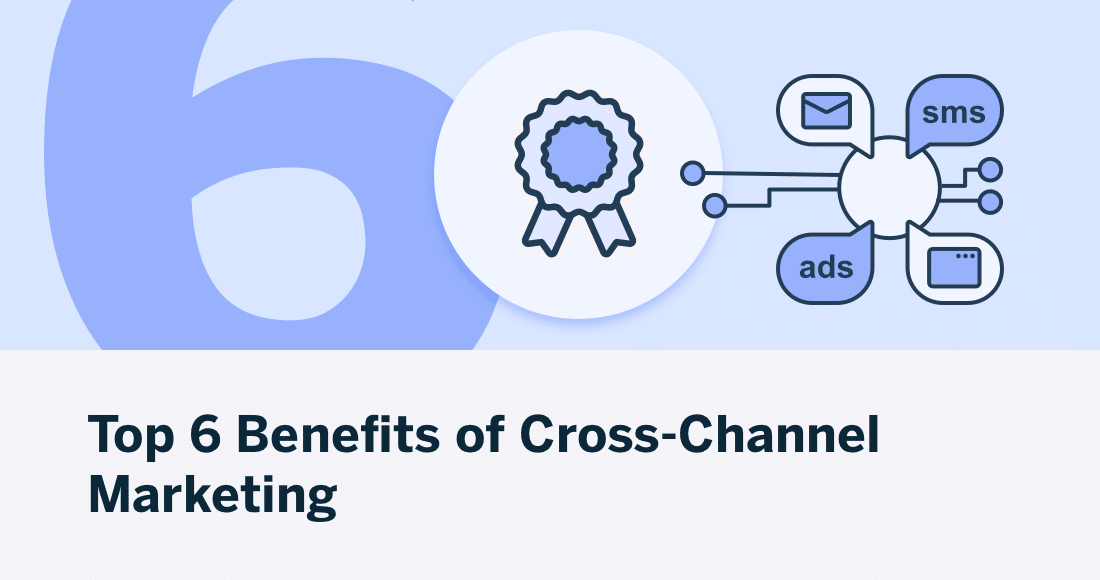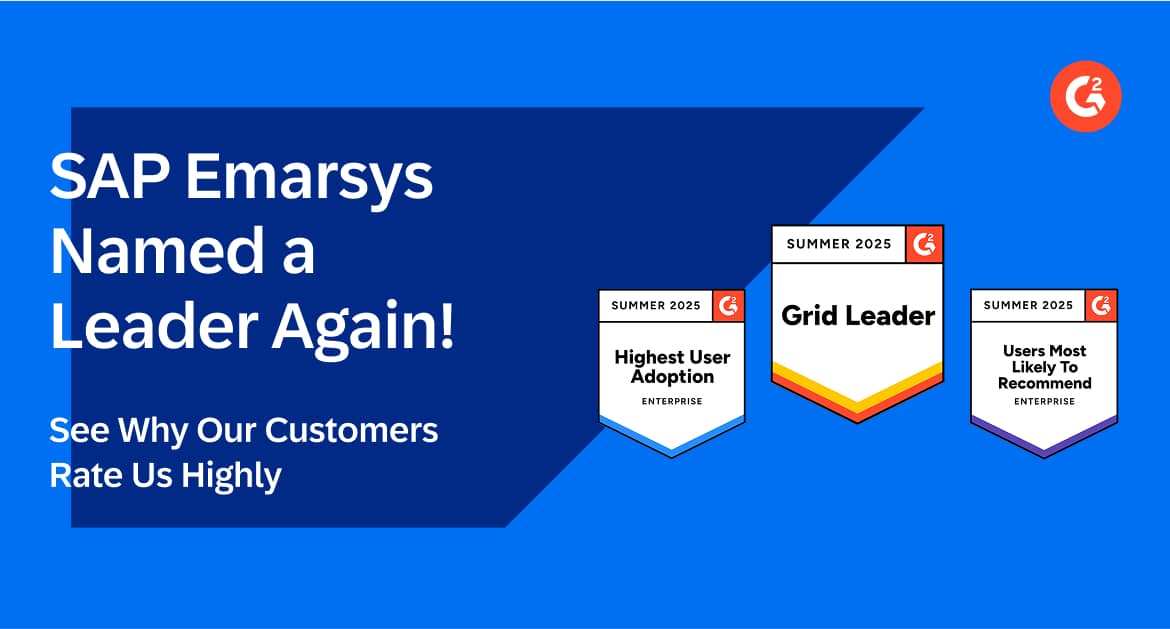Marketing isn’t what it used to be.
Today, customers engage with your brand across multiple devices and channels. If you want to maximize your brand awareness, grow your customer base, and stay ahead of your competition, you need to focus on cross-channel marketing.
In this article, we’ll walk you through the 6 key benefits of cross-channel marketing and explain why building brand consistency across multiple marketing channels is the best way to stay ahead in today’s fast-paced market.
The Major Benefits of Cross-Channel Marketing
Cross-channel marketing is a challenge. You’re faced with the task of creating a seamless brand experience across multiple channels and touchpoints that grabs audience attention, builds engagement, and drives conversion.
But doing the work of integrating multiple channels into your marketing strategy is worth it. Let’s take a closer look at some of the benefits of an effective cross-channel marketing strategy.
1. Meet Today’s Customers Where They’re At
Think old school for a minute. Back when marketing was totally offline, businesses needed to get their messages in front of their ideal customers by first finding them — where they were, where they liked to go, where they consumed their news or most often encountered advertisements. They needed to meet these potential customers where they were already spending their time.
And in a sense, modern marketing isn’t any different.
Each and every day, your customers spend their time across multiple channels. And if you’re only meeting them on one or two channels, you’re missing out on a whole world of potential brand-customer interactions.
With cross-channel marketing, you increase the number of potential touchpoints you have with your customers, boosting your engagement and chance of securing sales. If you can incorporate email marketing, social media, mobile app, and online ads alongside any traditional offline efforts, you’ll meet customers where they’re spending their time and build a significantly stronger connection with your brand.
2. Boost Brand Awareness & Increase Engagement
Brand awareness is the key to your business standing out amidst the crowded online space. However, your customers can’t buy products they can’t find — and even when they do, they’ll likely need multiple interactions with your brand before their curiosity is piqued enough to visit your website.
A robust cross-channel marketing strategy can help create a consistent presence across multiple platforms, and by doing so, increase the chances of people encountering your brand, and accelerating their familiarity with it.
Telling a consistent brand story by posting often on your chosen social media platforms, running regular ads, creating informative and relevant blog posts, and building effective email marketing campaigns all work together to create, build, boost, and cash in on that brand awareness sooner rather than later.
3. Drive Relevant Content by Diversifying Your Efforts
Sure, you could invest all of your marketing budget and team resources into building your brand on a single channel, but putting all of your eggs in one basket exposes your business to significant risk.
The strength of your online marketing strategy lies in diversity. More ways to communicate with your prospective buyers equals more opportunities to deliver relevant content to them, wherever they are.
You don’t stock a winter pantry with a single kind of vegetable, and you don’t build brand awareness and foster engagement by staying on a single channel, just hoping people find you and decide to engage. With a strong cross-channel marketing strategy, you can deliver relevant content across multiple media platforms to drive bigger, better business outcomes.
4. Collect More Data to Improve the Customer Journey
Building brand awareness by driving relevant content and a strong brand message across multiple channels isn’t easy. Successful cross-channel marketing involves delivering personalized experiences to the right people, on the right channel, at the right time.
This is where your customer data comes to play. As you begin executing your cross-channel marketing strategy, you’ll quickly find yourself collecting customer data from each channel.
Customer data is pure digital gold. Activate it, and you’ll have an invaluable resource that you can use to deliver the personalized experiences your customers demand, and greatly improve each individual customer journey.
5. Drive Customer Engagement With Responsive Interactions
Your online customers don’t want cookie cutter, one-size-fits-all online experiences. They want to engage with brands that understand them as individuals and demonstrate that by serving content that aligns with their interests, product affinities, and budget.
With an effective cross-channel marketing strategy, a deep pool of customer data, and the right customer engagement platform, you can do just that. From email and social ads to SMS and web, you can deliver responsive content that’s tailored to their individual interests. The more responsive your content, the more likely your target audience is to engage, and with higher engagement comes higher conversions and a higher ROI on your cross-channel marketing campaigns.
6. Build Trust In Your Brand
From social ads to podcast sponsorships and billboards on their morning commute, your target audience is hit with hundreds of ads each day. To stand out from this intense competition clamoring for their attention, you’re going to need to win their trust — and that trust must be won before you can earn their loyalty.
With single-channel marketing, this process is time-consuming and often costly. However, with cross-channel marketing, you can drastically improve your time to value by using personalized interactions to grow engagement and build trust in your products.
Cross-channel marketing isn’t about the hard sell. It’s about delivering informative and relevant content consistently, in order to organically grow a strong and loyal customer base that trusts your brand for years on end.
Pro Tips: Building a Successful Cross-Channel Campaign
Cross-channel marketing can take time to get right, but when brands that use three or more channels see a 287% higher conversion rate, it’s worth the investment. Let’s take a look at five quick tips to help get your cross-channel strategy off to a strong start.
1. Data Is Key
Businesses that use data-driven marketing strategies see 5-8x the ROI compared to those that don’t. Despite this, nearly 90% of businesses report that they’re under-utilizing their data.
If you want to get ahead and unlock a true understanding of your customer, data is your first priority. But when your data is split across multiple platforms, tools, and channels, it can be difficult to gain the single customer view needed to make accurate, data-backed decisions.
This is why your first step needs to be data unification. By using a customer engagement platform to consolidate your data and break down silos, you can create a holistic customer profile that allows you to understand how your customers are engaging across multiple channels, helping you to better plan your content and make smarter marketing decisions.
2. Clear Leadership Roles Are a Must
Research shows that 11.4% of project resources go to waste as a result of poorly-planned processes. But when launching a cross-channel strategy with multiple campaigns across multiple platforms means multiple points of contact, keeping projects on track can be a challenging task.
If your strategy isn’t managed correctly, you can end up with unnecessary delays, missed opportunities, and disconnected channels that harm the customer experience and hamper results.
For this reason, establishing clear leadership from the start could not be more important.
Before starting your strategy, designate a leader to manage the project with clear and open lines of communication. That doesn’t just mean regular meetings. It means joining the 25% of businesses that have shunned Excel spreadsheets in favor of a project management tool to help keep teams on track — and keep tabs on KPIs.
3. Set Clear Metrics and KPIs
Your cross-channel marketing strategy will grow and evolve over time as you invest in it. Your KPIs need to evolve with it.
95% of marketers agree that for your KPIs to truly matter, they need to be tied to your broader business goals. But tracking standard metrics like open rates in isolation won’t give you the visibility you need to understand the full impact of your strategy.
To help set KPIs that propel your strategy forward:
- Analyze your customer lifecycle data
- Identify bottlenecks and points of friction in the customer lifecycle journey that could be improved upon
- Create KPIs to measure the impact of your marketing activities on these points of friction
Ensure your KPIs are SMART, and consider setting them as milestones as opposed to a single, larger end goal.
For example, if you’re looking to increase e-commerce store sales from organic blog traffic, take your analytics a step beyond tracking conversion rates. Instead, consider tracking your performance like this:
- Blog to product page CTR – the number of customers who click from a blog post to a product page
- Add to cart rate – the number of those blog readers who then add a product to a cart
- Initiate checkout rate – the percentage of “add to carts” that start a checkout
- Complete checkout rate – the percentage of checkout sessions that result in a sale
By breaking the process down into bite size chunks, you reveal clear, specific stages of your customer journey that are easier to identify opportunities for improvement.
4. Invest in Marketing Automation
Cross-channel marketing can take some serious heavy lifting, but marketers don’t need to bear the weight on their own. With over 9,000 marketing solutions on the market, there are plenty of options to help you get more out of the time and money you put in.
Investing in marketing automation technology can help you:
- Drive more business: with over 75% of marketers reporting increased conversions since implementing automation.
- Save valuable time and budget: with 12.2% reduction in overheads on average, and 49% of marketers reporting time savings.
Automation doesn’t just help improve operational efficiency. It also helps you power personalization at scale.
Equipped with customer, sales and product data, the right cross-channel marketing automation platform will enrich your customer engagements with data-backed personalization. The result? More relevant content that drives engagement, sales, and customer loyalty.
5. Measure the Impact the Right Way
39% of marketers struggle to attribute results to specific channels and activities — and this can make it hard to prove the impact your strategy is having on your overall business goals.
If your channels are connected, your analytics need to be, too. By integrating your marketing analytics into a single, consolidated platform, you’ll gain a clear view of where your customers come from, and which campaigns and channels are having the greatest impact on your key metrics.
With a more complete overview of your strategy’s impact, you’ll be able to attribute sales to channels and specific engagements, and prove your revenue contribution.
Grow Your Cross-Channel Marketing Strategy With Emarsys
Cross-channel marketing is an effective and, these days, must-have approach to building your retail or e-commerce business. A cross-channel approach helps you connect with your customers, build your brand, grow engagement, and ultimately drive sales.
But while the benefits of cross-channel marketing definitely outweigh any potential negatives, there’s no getting around the fact that establishing a presence on multiple channels is a major challenge. Creating consistent and relevant content, and communicating with your customers, takes more time and effort than many brands can afford to spare.
The Emarsys Omnichannel Customer Engagement Platform makes this process easier by empowering brands to build sophisticated, automated cross-channel marketing campaigns at scale, all from a single platform. Our AI and predictive analytics help you drive personalization and improve customer experience, using real-time channel data. With Emarsys, you can optimize your marketing while simplifying execution across every single channel.












